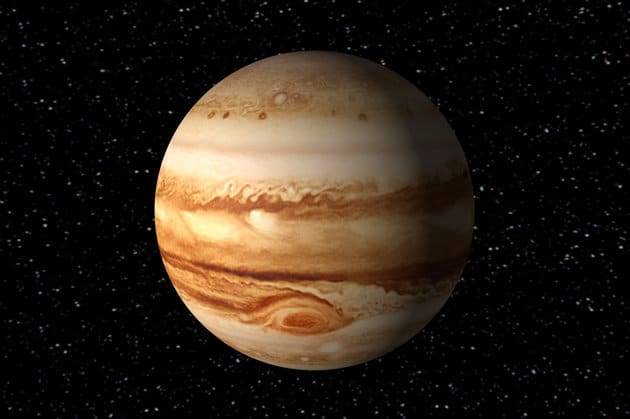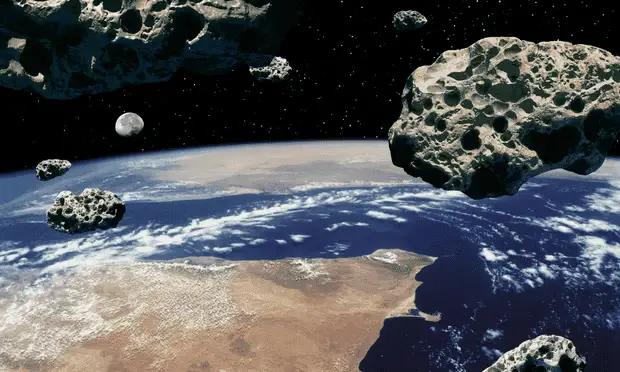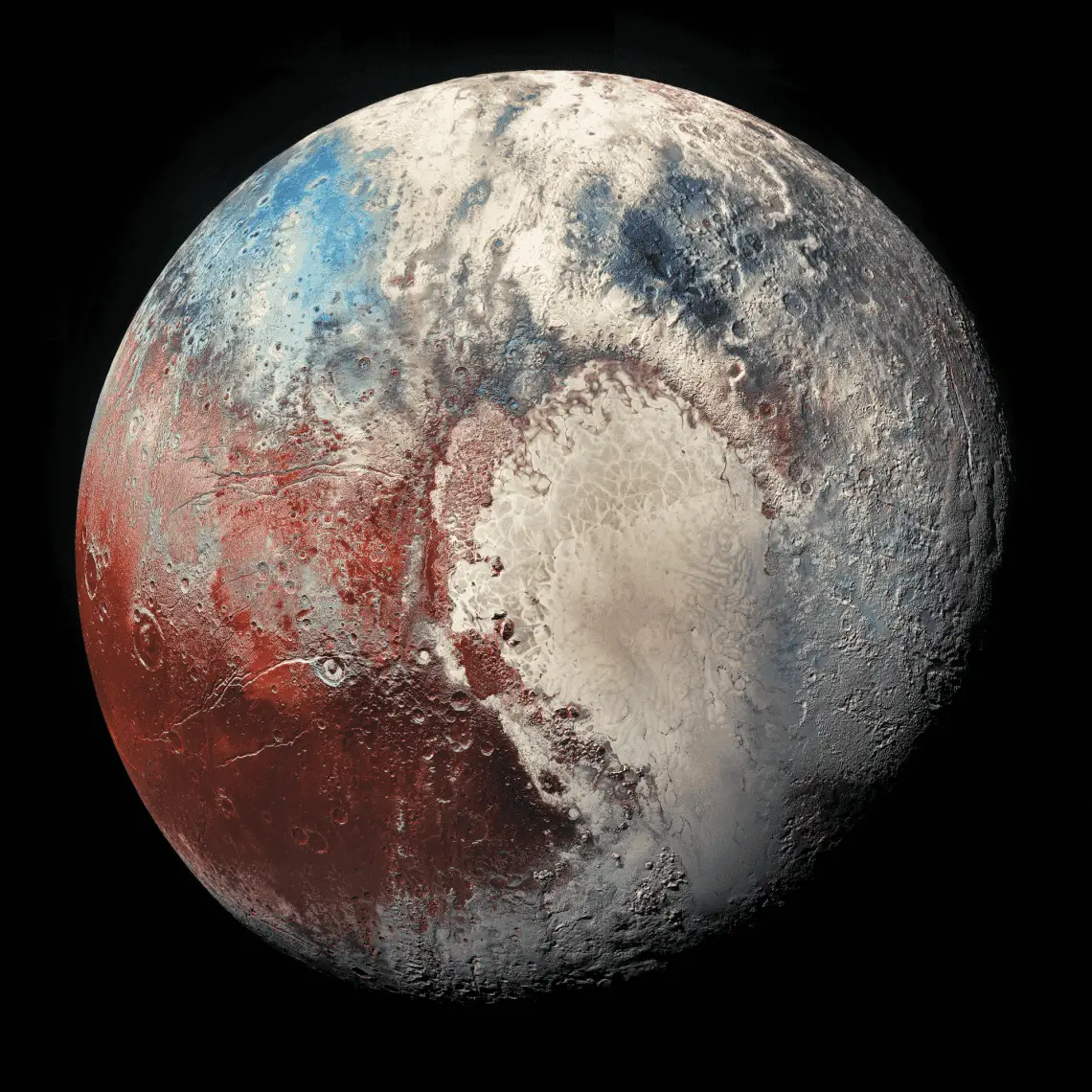Embark on a celestial journey as we explore Jupiter, the giant of our solar system. From its mesmerizing bands of clouds to the mysterious storms raging in its atmosphere, Jupiter holds secrets that have captivated astronomers for centuries. Join us on this cosmic adventure as we delve into the wonders and mysteries that make Jupiter a captivating and enigmatic neighbor in the vast expanse of space.
Thank you for reading this post, don't forget to subscribe!Journey to Jupiter: Unraveling the Mysteries of the Gas Giant
Structure of Jupiter
Jupiter is the fifth planet from the Sun and the largest planet in the Solar System. It is a gas giant with a mass one thousandth that of the Sun but two and a half times the total mass of all the other planets in the Solar System combined.
Jupiter is classified as a gas giant planet along with Saturn (Uranus and Neptune are classified as ice giant planets). Jupiter contains mainly hydrogen and helium – a quarter of its mass, although helium makes up only a tenth of its molecules.
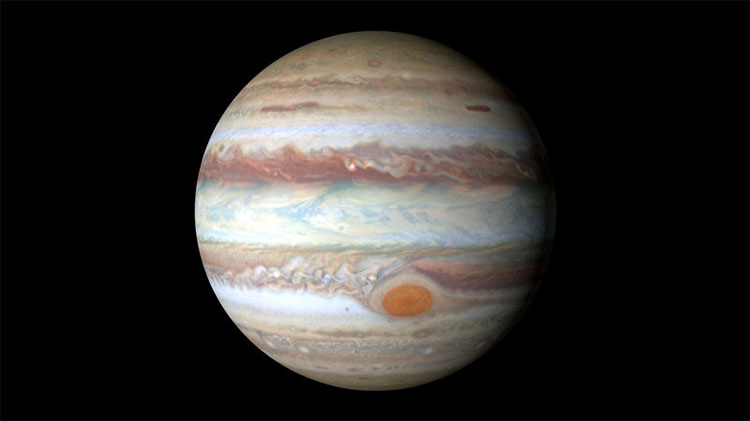
Jupiter is the largest planet in the Solar System.Jupiter mainly contains matter in gas and liquid states. It is the largest gas giant planet in the Solar System with a diameter of 142,984 km at the equator. The planet’s average density is 1.326 g/cm3, and is the most dense of the four gas giants. However, this density is less than any density of terrestrial planets.

Jupiter's surface is covered with mysterious clouds that roll and swirl at breakneck speed due to 8 super storms - photo: NASAJupiter’s upper atmosphere contains about 88–92% hydrogen and 8–12% helium as a percentage of volume or gas molecular ratio. Because the helium atom has four times the mass of the hydrogen atom, this composition varies when described in terms of the mass distribution of different elements. Thus, the planet’s atmosphere contains approximately 75% hydrogen and 24% helium by mass, with about 1% remaining due to other elements.
Jupiter’s mass is about 2.5 times the total mass of all the other planets in the Solar System.
Jupiter’s atmosphere
Jupiter boasts the most extensive atmosphere in our Solar System, stretching upwards of 5,000 kilometers in altitude. Due to the absence of a solid surface, scientists define the bottom of Jupiter’s atmosphere where the atmospheric pressure reaches 10 bars, a pressure level 10 times greater than that found at Earth’s surface.

Delving into the depths of Jupiter’s atmosphere reveals a complex structure that extends beyond 3,000 kilometers. This layered composition unveils a captivating interplay of temperatures and pressures, creating a dynamic environment.
The atmosphere’s canvas is painted with prominent cloud features, each contributing to the intricate patterns that grace the gas giant’s expansive surface. Comprising elements such as ammonia, methane, and water vapor, these clouds add diversity to Jupiter’s atmospheric landscape.
One of the most spectacular displays within this immense atmosphere is the occurrence of massive lightning storms. Surpassing the power of any observed on Earth, these storms illuminate Jupiter’s skies with brilliant flashes, offering a glimpse into the unparalleled dynamics of this colossal gas giant. As scientists continue to unravel the mysteries concealed within Jupiter’s atmosphere, the allure of its vast and tempestuous expanse only deepens.
Clouds on Jupiter
Jupiter’s clouds form a mesmerizing tapestry across its vast atmosphere, contributing to the planet’s dynamic and ever-changing appearance. Comprising a variety of compounds, including ammonia, methane, and water vapor, these clouds create intricate patterns and distinct colorations.
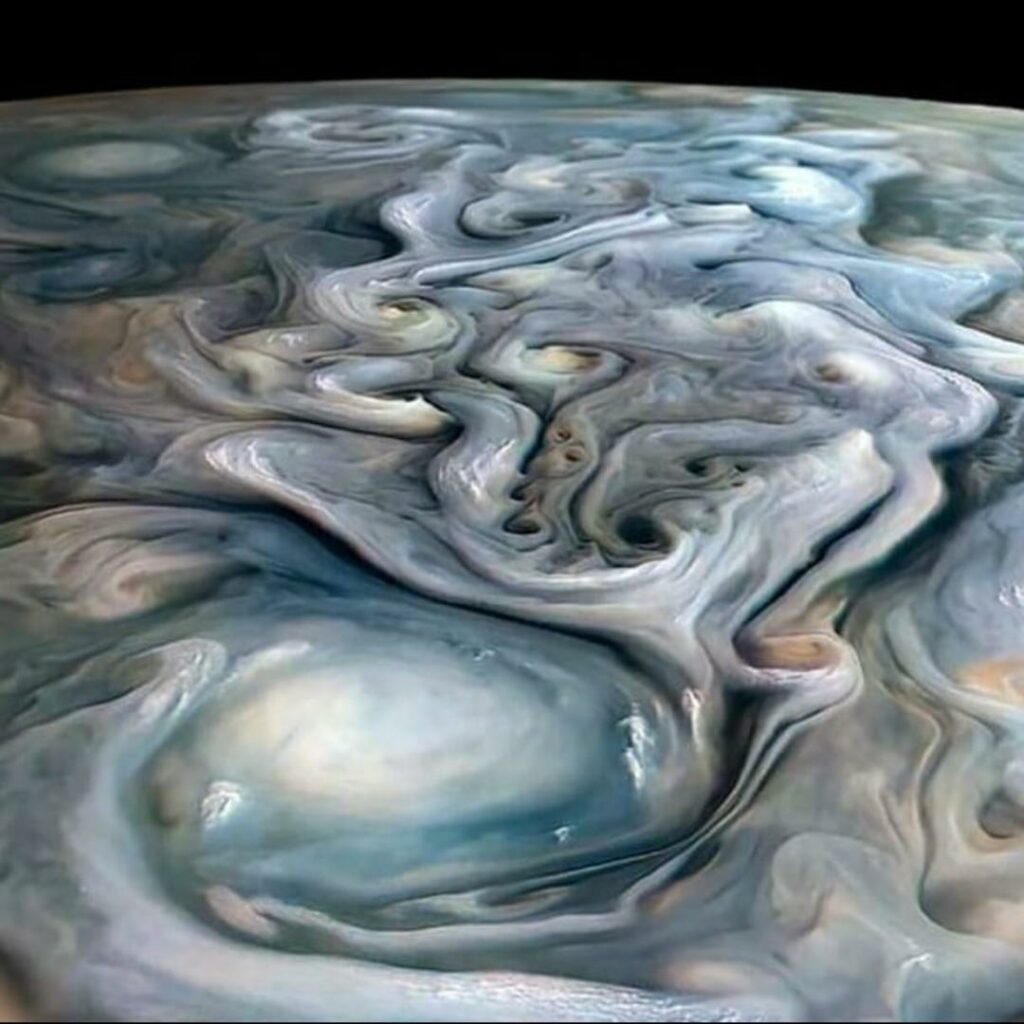
The cloud bands on Jupiter are a prominent feature, driven by powerful jet streams that race through the atmosphere. These bands, varying in hues of white, brown, and red, reveal the planet’s complex atmospheric dynamics. Notable among these features is the iconic Great Red Spot, a colossal storm with swirling cloud formations spanning thousands of kilometers.
Explore Jupiter Enigma: Unveiling the Secrets of the Great Red Spot
The Great Red Spot, Jupiter’s iconic and enigmatic feature, captivates astronomers and stargazers alike. Positioned at 22° south latitude below the equator, this massive storm is a testament to the planet’s dynamic atmosphere. Rotating in the opposite direction of Jupiter’s spin, the Great Red Spot boasts a diameter often surpassing that of Earth, creating a celestial spectacle.
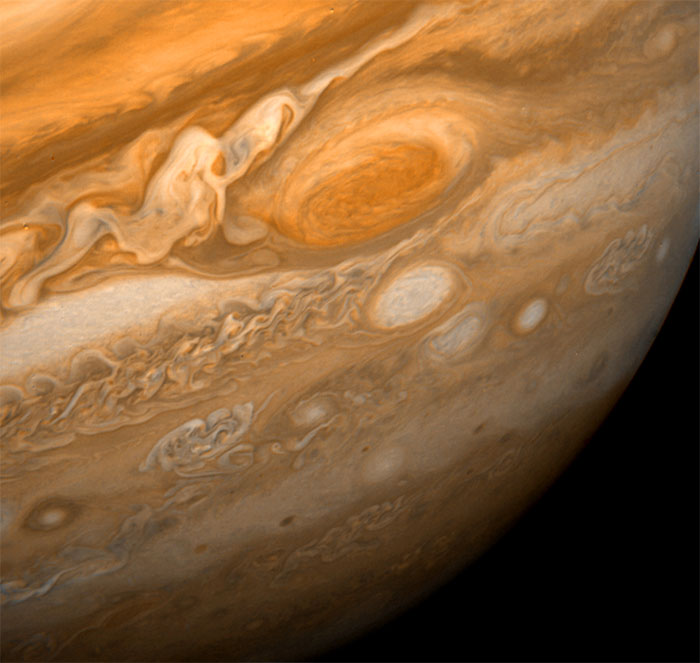
Photograph of the Great Red Spot and surrounding areas taken by Voyager 1 on February 25, 1979, when the spacecraft was 9.2 million km from the planet.
This enduring storm has intrigued scientists since at least 1831, with some historical records suggesting its presence as far back as 1665. Its sustained existence raises questions about the underlying atmospheric processes and the intricate interplay of gases on the gas giant.
Continued observations and studies of the Great Red Spot provide valuable insights into the longevity and behavior of storms on gas giants. As one of the most prominent features in our solar system, the Great Red Spot remains an enduring symbol of the mysteries concealed within the depths of Jupiter’s colossal atmosphere.
Jupiter’s Belt
Jupiter’s planetary rings, a subtle yet intriguing feature, add another layer of complexity to the gas giant’s cosmic profile. Comprising three primary components—the innermost particle ring or halo, the distinct main ring, and the outermost thin ring—Jupiter’s ring system unveils a delicate dance of celestial matter.
Unlike Saturn’s icy rings, Jupiter’s rings are primarily composed of dust, contributing to their faint appearance. The innermost halo, the brighter main ring, and the delicate outer ring collectively offer astronomers a glimpse into the intricate dynamics at play within Jupiter’s orbit.
Although less prominent than Saturn’s majestic rings, Jupiter’s ring system remains a subject of scientific interest and exploration. Studying these rings provides valuable insights into the origin and evolution of planetary ring systems, adding nuances to our understanding of the varied celestial phenomena within our solar system.
Jupiter’s magnetic field
Jupiter’s magnetic field is an astounding 14 times stronger than Earth’s magnetic field, making it the most formidable magnetic force in our entire Solar System. This colossal magnetic influence extends far into space, shaping Jupiter’s magnetosphere and interacting with charged particles in its vicinity.
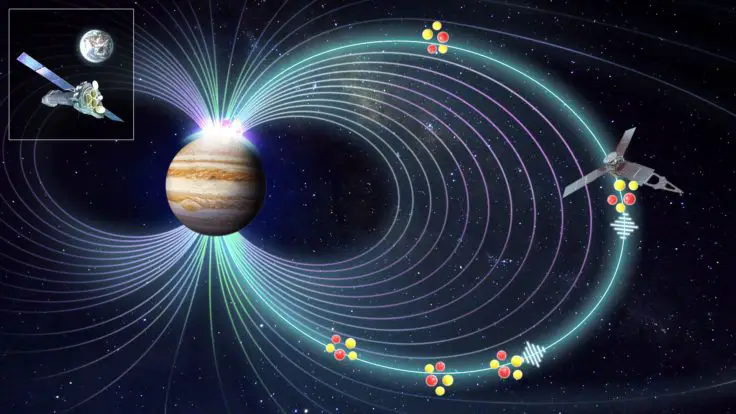
The sheer strength of Jupiter’s magnetic field is a consequence of the planet’s rapid rotation and the presence of conductive metallic hydrogen deep within its interior. This combination generates a magnetic dynamo effect, producing a magnetic field unparalleled in intensity. The magnetosphere, or the region dominated by Jupiter’s magnetic field, extends vast distances, creating a protective bubble that influences the trajectories of charged particles and deflects harmful solar winds.
This magnetic might also gives rise to breathtaking auroras near Jupiter’s poles, painting the gas giant’s atmosphere with vibrant displays of light.
Jupiter’s orbit

Jupiter is the only planet whose center of mass with the Sun is outside the Sun’s volume, although only less than 7% of the Sun’s radius. The average distance between Jupiter and the Sun is 778 million km (5.2 times the distance from Earth to the Sun, or 5.2 AU) and it completes an orbit every 11.86 Earth years. .
Satellites of Jupiter
Jupiter’s family of diverse satellites, often referred to as the Jovian moons, constitutes a captivating celestial ensemble. With over 80 known moons, each possessing unique characteristics, these satellites range from the massive Ganymede, the largest moon in the solar system, to the volcanic Io and the ice-covered Europa.

These moons play a crucial role in shaping Jupiter’s magnetosphere and offer valuable clues about the planet’s history. Ongoing explorations, including missions like NASA’s Juno and the Galileo spacecraft, continue to unveil the mysteries surrounding Jupiter’s magnetic field, orbit, and its intriguing satellite system.
Mission to explore Jupiter
NASA’s mission to explore Jupiter is primarily spearheaded by the Juno spacecraft, launched on August 5, 2011, with the goal of unraveling the mysteries of the largest planet in our solar system. Juno, a solar-powered spacecraft, entered Jupiter’s orbit on July 4, 2016, embarking on an ambitious mission to study the planet’s atmosphere, magnetic field, and composition.

Close-up of the largest planet in the solar system - photo: NASAEquipped with a suite of scientific instruments, Juno conducts detailed observations, focusing on the polar regions of Jupiter. The spacecraft employs a highly elliptical orbit, allowing it to skim close to the planet and gather unprecedented data on its gravitational and magnetic fields. Juno’s payload includes JunoCam, a visible-light camera capturing stunning images of Jupiter’s cloud formations.
One of Juno’s primary objectives is to understand Jupiter’s origin and evolution, providing insights into the early history of our solar system.
Juno’s mission explore jupiter has been extended several times, showcasing the success and significance of its scientific contributions. As Juno continues its orbits around Jupiter, it remains a crucial asset for advancing our understanding of this gas giant and its role in the broader celestial tapestry.
Hope that through the Explore Jupiter journey in this article, you’ve found it both fascinating and enlightening about the largest planet in the Solar System. Share your thoughts or further questions to continue exploring the wonders of the universe together.

